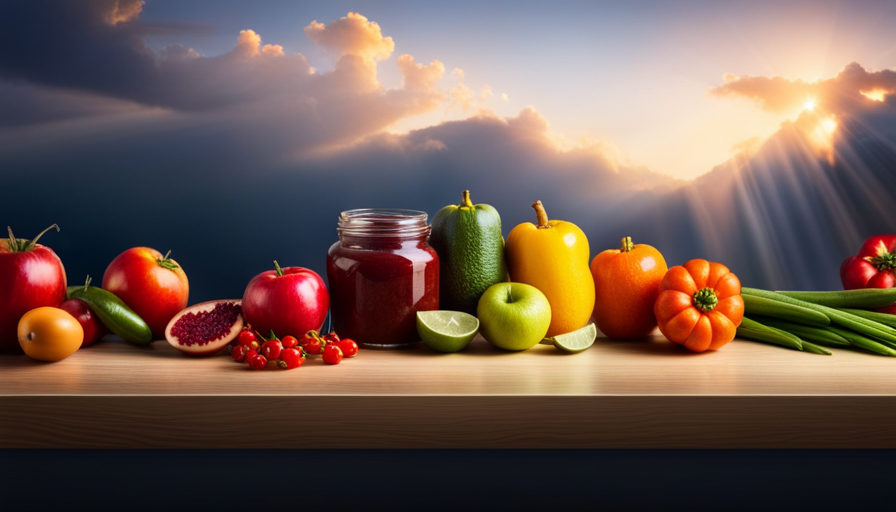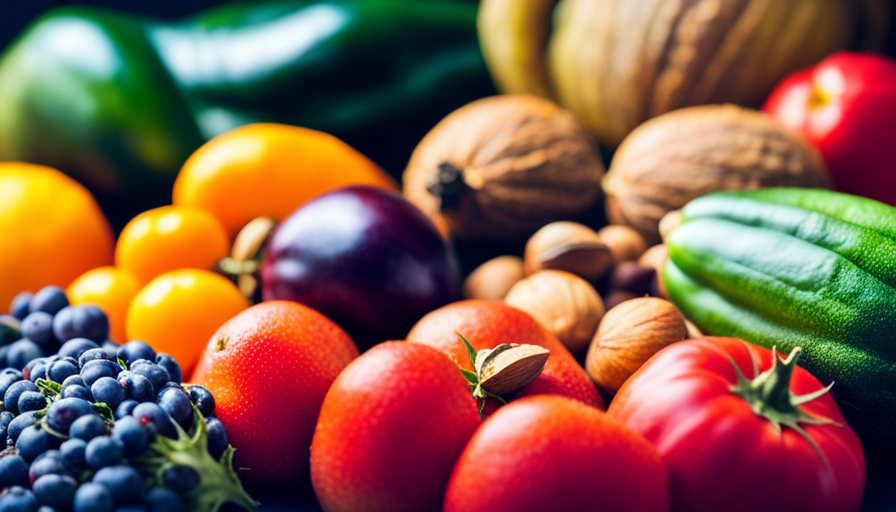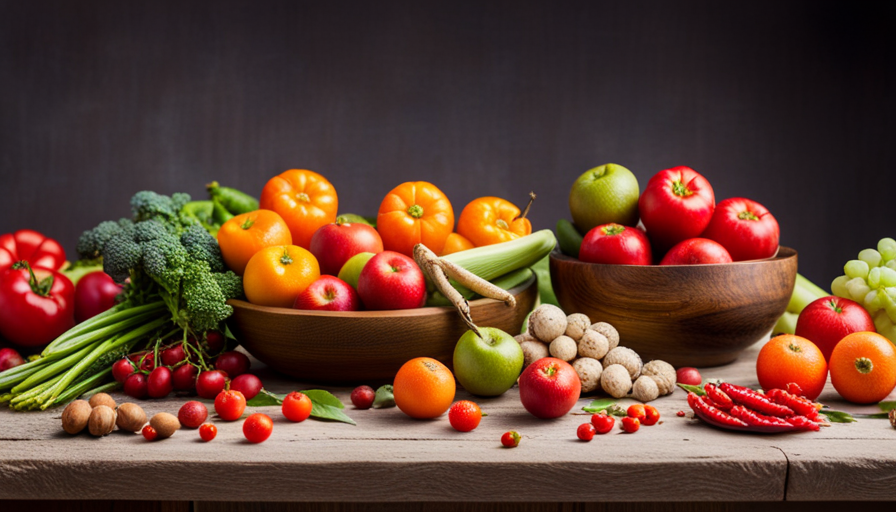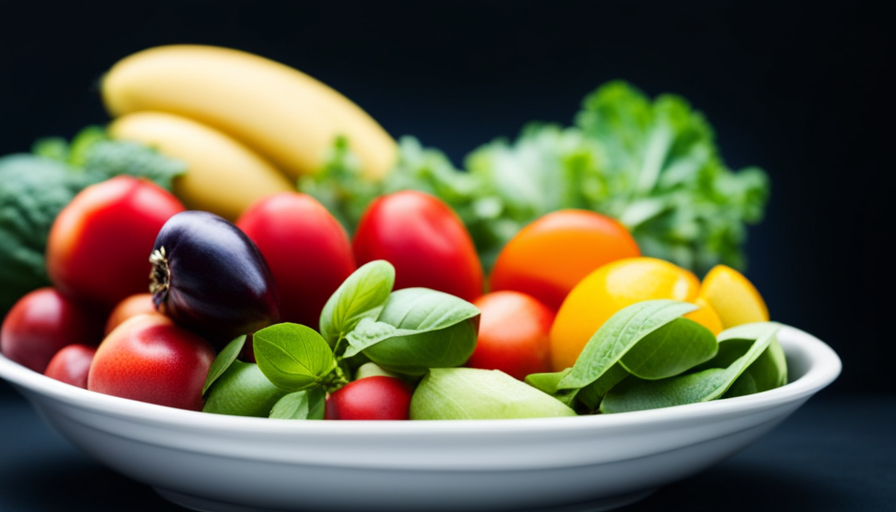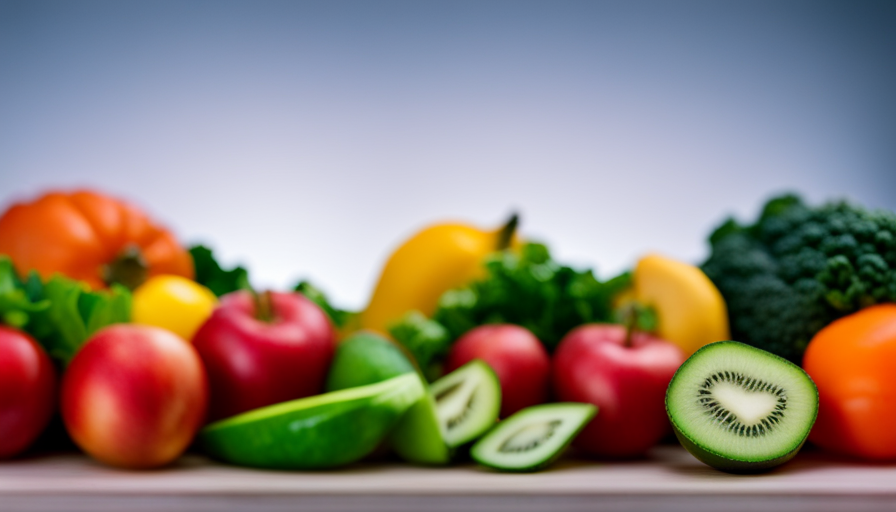Just like a refreshing drink for parched skin, raw food can act as a beneficial elixir for your complexion. Opting for natural, unprocessed ingredients for your moisturizer can provide a range of benefits for your skin. Whether it’s hydrating and soothing or rejuvenating and protective, raw food has the ability to transform your skincare routine.
Coconut oil, with its rich and creamy texture, is a true superstar in the world of raw food moisturizers. Its high levels of fatty acids make it an excellent emollient, sealing in moisture and leaving your skin feeling silky smooth.
Shea butter, derived from the nuts of the shea tree, is another raw food gem that deeply moisturizes and nourishes the skin, thanks to its high concentration of vitamins and fatty acids.
Aloe vera gel, known for its soothing properties, is a raw food ingredient that can calm and hydrate even the most sensitive skin.
Avocado, with its abundance of essential fatty acids, can provide intense moisturization and promote a youthful glow.
Honey, oatmeal, and green tea are also raw food ingredients that can be incorporated into DIY moisturizers, offering a range of benefits from hydration and exfoliation to antioxidant protection.
In this article, we will explore the benefits of raw food for skincare and delve into some DIY raw food moisturizer recipes that will leave your skin feeling pampered and radiant. Get ready to nourish your skin from the inside out with the power of raw food.
Key Takeaways
- Raw food can be used as a moisturizer cream for the skin, providing hydration, soothing, rejuvenation, and protection.
- Coconut oil and shea butter are beneficial ingredients in raw food moisturizers, as they deeply moisturize and nourish the skin, improve moisture levels, and have anti-aging benefits.
- Aloe vera gel is another key ingredient in raw food moisturizers, as it calms and hydrates sensitive skin, reduces fine lines and wrinkles, and promotes collagen production.
- Avocado is rich in healthy fats and vitamins, making it a great ingredient for moisturizers as it provides intense moisturization, improves skin texture and elasticity, and soothes sensitive skin.
Benefits of Raw Food for Skincare
Discover the incredible benefits of using raw food for your skincare routine and let your skin feel nourished and rejuvenated like never before!
Raw food has long been recognized for its numerous health benefits, but did you know that it can also work wonders for your skin? Incorporating raw food recipes and following a raw food diet can provide your skin with essential nutrients, vitamins, and antioxidants that promote a healthy complexion.
Raw fruits and vegetables are packed with vitamins A, C, and E, which are known to have anti-aging effects and can help reduce the appearance of fine lines and wrinkles. Additionally, these foods are rich in antioxidants that protect the skin from damage caused by free radicals, environmental pollutants, and UV radiation.
Not only do raw foods nourish your skin from the inside, but they can also be used topically as part of your skincare routine. For example, mashed avocado can be applied as a face mask to hydrate and moisturize the skin, while cucumber slices can help reduce puffiness and dark circles under the eyes.
Transitioning into the subsequent section about coconut oil, this natural ingredient is another excellent addition to your raw food skincare routine.
Coconut Oil
Coconut oil, a popular choice for skincare, is known for its hydrating properties and can improve skin moisture by up to 20%. This natural ingredient has been used for centuries in tropical regions for its numerous benefits.
Coconut oil contains high levels of fatty acids, such as lauric acid, which can penetrate deep into the skin and lock in moisture, keeping it soft and supple. It also has antimicrobial properties that can help fight against acne-causing bacteria and reduce inflammation.
In addition to its moisturizing abilities, coconut oil is rich in antioxidants, such as vitamin E, which can help protect the skin from free radical damage and premature aging. It can also enhance the skin’s natural barrier function, preventing moisture loss and keeping it balanced.
When choosing coconut oil for skincare, it’s important to opt for organic, cold-pressed varieties to ensure the highest quality and purity. It can be used as a standalone moisturizer or incorporated into homemade skincare recipes, such as body butters or lip balms. However, it’s worth noting that coconut oil may not be suitable for all skin types, especially those with oily or acne-prone skin, as it can be comedogenic for some individuals.
Moving on to the next natural skincare ingredient, shea butter, it shares similar moisturizing properties with coconut oil.
Shea Butter
Indulge in the rich and luxurious texture of shea butter, and let its velvety smoothness deeply nourish and pamper your skin. Shea butter is a natural skincare product that’s been used for centuries for its amazing moisturizing properties. Here are four reasons why shea butter should be your go-to moisturizer:
-
Intense Hydration: Shea butter is packed with fatty acids and vitamins that provide intense hydration to your skin. It penetrates deep into the layers, locking in moisture and leaving your skin feeling soft and supple.
-
Soothing Relief: If you have dry, itchy, or irritated skin, shea butter can come to the rescue. Its anti-inflammatory properties help soothe and calm irritated skin, providing instant relief.
-
Anti-Aging Benefits: Shea butter is rich in antioxidants that fight against free radicals, which can cause premature aging. Regular use of shea butter can help diminish the appearance of fine lines and wrinkles, giving you a youthful glow.
-
Versatile and Gentle: Shea butter is suitable for all skin types, including sensitive skin. It’s non-comedogenic, meaning it won’t clog your pores, and it’s gentle enough to be used on your face, body, and even your hair.
Transitioning to our next topic, aloe vera gel, we’ll explore its incredible healing properties and how it can complement your raw food skincare routine.
Aloe Vera Gel
Pamper yourself with the incredible healing properties of aloe vera gel and let it work wonders on your skin, leaving it refreshed, rejuvenated, and glowing. Aloe vera gel is a powerful natural moisturizer that’s been used for centuries in skincare routines. It’s derived from the aloe vera plant, known for its succulent leaves filled with a gel-like substance.
This gel is rich in vitamins, minerals, and antioxidants that nourish and hydrate the skin. When applied topically, aloe vera gel can provide deep hydration, soothing dryness and reducing the appearance of fine lines and wrinkles. Its anti-inflammatory properties help calm irritated skin and alleviate redness. Aloe vera gel is also known for its ability to promote collagen production, enhancing the skin’s elasticity and firmness.
Incorporating aloe vera gel into your raw food skincare routine can be as simple as applying it directly to your face and body after cleansing. You can even mix it with other natural ingredients like coconut oil or honey for added benefits. Remember to always choose pure, organic aloe vera gel to reap the maximum benefits.
Transitioning into the next section about avocado, this raw superfood is another excellent option to include in your skincare regimen.
Avocado
Avocado is an excellent natural ingredient for nourishing and moisturizing the skin. It’s rich in healthy fats and vitamins, which provide deep hydration and nourishment to the skin cells.
Regular use of avocado can help improve skin texture and elasticity, giving it a healthy and youthful appearance.
Nourishes and Moisturizes the Skin
Boost your skin’s hydration and nourishment with a natural moisturizer cream made from raw ingredients. Incorporating a raw food diet into your natural skincare routine can provide numerous benefits for your skin. Raw ingredients, such as avocado, are rich in healthy fats and vitamins that deeply nourish and moisturize the skin, leaving it soft and supple. Avocado is packed with essential fatty acids, which help to strengthen the skin barrier and retain moisture. It also contains vitamins A, C, and E, which have antioxidant properties that protect the skin from free radicals and promote a healthy complexion. Additionally, avocado is known for its ability to soothe and calm irritated skin, making it an excellent choice for those with sensitive skin. Transitioning to the next section, avocados are not only nourishing but also rich in healthy fats and vitamins that promote overall skin health.
Rich in Healthy Fats and Vitamins
Indulge in the natural goodness of a rich moisturizer made from raw ingredients that’ll leave your skin feeling deeply nourished and replenished.
Raw foods aren’t only beneficial for our internal health, but also for our skin. Incorporating raw food into your diet can provide numerous benefits. It can improve the health and appearance of your skin.
Raw food recipes often include ingredients like avocados, coconut oil, and nuts. These ingredients are rich in healthy fats and vitamins. They help to hydrate and moisturize the skin, leaving it soft and supple. Additionally, they contain essential nutrients that promote skin cell regeneration and repair.
By incorporating raw food into your skincare routine, you can nourish your skin from the inside out. This will help improve skin texture and elasticity, giving you a youthful and radiant complexion.
Helps Improve Skin Texture and Elasticity
Coconut oil, known for its nourishing properties, can help improve skin texture and elasticity. It leaves your complexion feeling smooth and youthful. Picture yourself with skin that feels as soft as silk after using coconut oil regularly. This natural moisturizer is packed with nutrients that promote a youthful appearance. Here’s how coconut oil improves skin elasticity and helps maintain a radiant glow:
- It hydrates and nourishes the skin, preventing dryness and flakiness.
- It boosts collagen production, enhancing skin elasticity and reducing the appearance of fine lines and wrinkles.
- It contains antioxidants that protect the skin from damage caused by free radicals.
- It provides essential fatty acids that strengthen the skin barrier and promote a healthy, supple complexion.
By incorporating coconut oil into your skincare routine, you can achieve a smoother, more youthful-looking complexion.
Now, let’s move on to the benefits of using cucumber as a moisturizer.
Cucumber
Cucumber is a remarkable ingredient for skincare due to its hydrating and refreshing effects. It contains a high water content that helps to replenish and moisturize the skin, leaving it feeling revitalized and nourished.
Additionally, cucumber has soothing properties that can calm irritated skin and reduce redness, making it a great choice for those with sensitive skin.
Furthermore, cucumber has been known to reduce puffiness and dark circles around the eyes. Its cool temperature and natural astringent properties help to constrict blood vessels, diminishing the appearance of under-eye bags and giving a more youthful and refreshed look.
Hydrating and Refreshing Effects
Boost your skin’s hydration and achieve a refreshing glow by incorporating a raw food-based moisturizer cream into your skincare routine. Using natural ingredients in homemade recipes can provide numerous benefits for your skin.
Raw cucumber is an excellent choice for a moisturizer cream due to its hydrating properties. Cucumbers are high in water content, which helps to replenish moisture in the skin and keep it hydrated throughout the day. Additionally, cucumbers contain vitamins and minerals that nourish the skin, leaving it looking fresh and revitalized. The cooling effect of cucumber also helps to soothe and calm irritated skin, making it an ideal choice for those with sensitive skin.
By incorporating a raw cucumber moisturizer cream into your skincare routine, you can achieve a hydrated and refreshed complexion.
Soothes and Calms Irritated Skin
After exploring the hydrating and refreshing effects of raw food as a moisturizer cream, let’s delve into its ability to soothe and calm irritated skin.
When our skin becomes irritated, whether it’s due to environmental factors or skin conditions, it can feel uncomfortable and look red and inflamed. This is where raw food comes to the rescue. Packed with soothing botanicals and natural remedies, it can help to calm and alleviate skin irritation.
Ingredients like aloe vera, cucumber, and chamomile have been used for centuries to soothe and heal the skin. Their anti-inflammatory properties can reduce redness and irritation, leaving your skin feeling calm and rejuvenated.
Incorporating raw food into your skincare routine can be a game-changer for those with sensitive or irritated skin. And now, let’s explore how it can also help reduce puffiness and dark circles.
Helps Reduce Puffiness and Dark Circles
When you incorporate this magical ingredient into your skincare routine, you’ll witness the enchanting disappearance of under-eye bags and the dark, haunting circles that have plagued you for so long.
Raw food, specifically certain fruits and vegetables, can work wonders in reducing eye bags and providing natural remedies for dark circles. The high water content in cucumber slices, for example, helps hydrate the delicate skin around the eyes and reduces puffiness. Additionally, the antioxidants found in raw potato slices can help lighten dark circles and brighten the under-eye area. Remember to chill these ingredients before applying them to maximize their soothing effects.
By incorporating these raw food remedies into your skincare routine, you can bid farewell to the tired, puffy eyes that have been holding you back.
Now, let’s move on to the next step and discover the wonders of honey.
Honey
To enhance your raw food experience, why not try using honey as a moisturizer cream? Honey is not only a delicious natural sweetener, but it also has numerous benefits for our skin. For those who are looking for honey alternatives, you may be pleased to know that honey is a versatile ingredient that can be used on its own or combined with other natural ingredients to create effective moisturizers.
One of the reasons why honey is a great option for a moisturizer cream is because it’s suitable for all skin types, including sensitive skin. Unlike some commercial creams that can cause skin allergies or irritations, honey is gentle and soothing. It has natural antibacterial properties that can help prevent and treat acne, making it an excellent choice for those dealing with breakouts. Honey also contains antioxidants that can help slow down the aging process and improve the overall appearance of the skin.
As we transition into the subsequent section about oatmeal, it’s important to note that honey can be combined with oatmeal to create a nourishing and hydrating face mask. Oatmeal is known for its ability to soothe and moisturize the skin, making it a perfect complement to honey. Together, these two ingredients can provide a natural and effective solution for dry or irritated skin.
Oatmeal
Combining oatmeal with honey creates a nourishing and hydrating face mask, perfect for soothing and moisturizing the skin. Oatmeal isn’t just a healthy breakfast option, but it also offers numerous benefits for our skin. When used in a face mask, oatmeal can help cleanse, exfoliate, and moisturize the skin, leaving it feeling soft and refreshed.
Here are four benefits of using an oatmeal face mask:
-
Gentle exfoliation: Oatmeal contains saponins, natural compounds that gently cleanse the skin and remove dead cells, revealing a smoother complexion.
-
Soothes irritation: Oatmeal has anti-inflammatory properties that can help calm irritated skin, reducing redness and itchiness.
-
Moisturizes dry skin: The proteins and lipids in oatmeal help lock in moisture, making it a great moisturizer for dry and dehydrated skin.
-
Reduces acne: Oatmeal can absorb excess oil from the skin and unclog pores, making it effective in reducing acne and preventing breakouts.
Incorporating an oatmeal face mask into your skincare routine can provide numerous benefits for your skin.
Next, let’s explore how green tea can further enhance your raw food skincare regimen.
Green Tea
Green tea has a multitude of benefits for the skin, making it a great addition to any skincare routine. It not only provides anti-aging and antioxidant benefits, but it also soothes and refreshes the skin.
The powerful antioxidants found in green tea can help protect the skin from free radicals, reducing the signs of aging and promoting a youthful complexion.
Additionally, green tea has anti-inflammatory properties that can help reduce redness and inflammation, making it an excellent choice for those with sensitive or acne-prone skin.
Anti-Aging and Antioxidant Benefits
Are you looking for a moisturizer cream that helps with anti-aging and provides antioxidant benefits? Look no further! Incorporating green tea into your skincare routine can offer numerous advantages.
Here are three reasons why green tea is a fantastic choice for your natural anti-aging diet and skincare routine:
-
Powerful Antioxidants: Green tea is rich in antioxidants, such as catechins, that help fight free radicals and reduce the signs of aging.
-
Improved Skin Elasticity: The polyphenols found in green tea can enhance collagen production, promoting firmer and more elastic skin.
-
Reduced Inflammation: Green tea possesses anti-inflammatory properties that can soothe redness and irritation, resulting in a calmer complexion.
By adding green tea to your moisturizer cream, you can enjoy these anti-aging benefits while nourishing your skin.
The next section will explore how green tea soothes and refreshes the skin without using any harsh chemicals.
Soothes and Refreshes the Skin
Indulge in the soothing and refreshing benefits of green tea for your skin, leaving you feeling rejuvenated and revitalized. Green tea is not only a popular beverage, but it also offers incredible benefits when used as a moisturizer cream. The soothing ingredients found in green tea, such as polyphenols and catechins, help to calm and soothe the skin, making it an ideal choice for those with sensitive or irritated skin. Additionally, green tea is known for its natural skincare benefits, thanks to its high antioxidant content. Antioxidants help to protect the skin from damage caused by free radicals, which can lead to premature aging. By incorporating green tea into your skincare routine, you can enjoy the soothing and refreshing effects it has on your skin. This natural ingredient helps reduce redness and inflammation, providing a smooth and even complexion. Transitioning to the next section, let’s explore how green tea helps reduce redness and inflammation further.
Helps Reduce Redness and Inflammation
Experience the calming embrace of green tea as it works to soothe redness and inflammation, leaving your skin feeling like a cool breeze on a warm summer day. Here are four reasons why incorporating green tea into your skincare routine can help reduce redness and inflammation:
-
Anti-inflammatory properties: Green tea contains polyphenols that’ve been shown to reduce inflammation and soothe irritated skin.
-
Antioxidant power: The antioxidants in green tea help neutralize free radicals, which can contribute to redness and inflammation.
-
Reduces acne: Green tea’s antibacterial properties can help combat acne-causing bacteria, leading to a reduction in breakouts.
-
Natural skin remedy: Unlike many commercial products that contain harsh chemicals, green tea is a natural and gentle alternative for soothing redness and inflammation.
Now that you understand the benefits of green tea, let’s dive into some DIY raw food moisturizer recipes that’ll nourish and hydrate your skin.
DIY Raw Food Moisturizer Recipes
Try making your own raw food moisturizer using simple ingredients like avocado, coconut oil, and aloe vera gel, blending them together until you achieve a smooth and creamy consistency. DIY raw food moisturizers are a great way to nourish your skin with natural ingredients for a healthy, glowing complexion. Not only are these homemade recipes free from harmful chemicals and preservatives, but they also provide essential nutrients that can help improve the overall appearance of your skin.
To give you some inspiration, here are a few DIY raw food moisturizer recipes:
| Recipe | Ingredients |
|---|---|
| Avocado Moisturizer | 1 ripe avocado, 1 tablespoon coconut oil, 1 tablespoon aloe vera gel |
| Coconut Oil Moisturizer | 2 tablespoons coconut oil, 1 tablespoon shea butter, 1 teaspoon vitamin E oil |
| Aloe Vera Moisturizer | 3 tablespoons aloe vera gel, 1 tablespoon almond oil, 1 teaspoon honey |
These recipes are easy to make and can be customized based on your skin type and preferences. Avocado is rich in healthy fats and antioxidants, which can help hydrate and nourish your skin. Coconut oil is known for its moisturizing properties, while aloe vera gel has soothing and anti-inflammatory benefits. Other natural ingredients like shea butter, almond oil, and honey also provide added nourishment and hydration.
By incorporating these DIY raw food moisturizers into your skincare routine, you can achieve a natural and radiant glow while avoiding the use of synthetic ingredients. Remember to patch test any new product before applying it to your face to ensure compatibility with your skin.
Frequently Asked Questions
Can raw food-based moisturizers be used on all skin types?
Raw food-based moisturizers are a game-changer for all skin types! Unlike conventional moisturizers that may contain harmful chemicals, raw food-based moisturizers are natural and packed with nutrients.
The benefits of using raw food-based moisturizers are unparalleled. They provide intense hydration, nourish the skin with vitamins and antioxidants, and promote a healthy, youthful complexion.
Whether you have dry, oily, or sensitive skin, raw food-based moisturizers are a safe and effective choice for achieving a radiant glow.
Are there any potential side effects or allergic reactions to using raw food as a moisturizer?
There are potential risks and precautions to consider when using raw food as a moisturizer cream. Allergic reactions can occur if you have a sensitivity to certain ingredients. It’s important to patch test the moisturizer on a small area of skin before applying it all over.
Additionally, raw food can spoil quickly, so it’s crucial to properly store and refrigerate any homemade moisturizers. To maximize the benefits, make sure the raw food is fresh and blended well before applying it to your skin.
How long do the moisturizing effects of raw food-based creams typically last?
The moisturizing effects of raw food-based creams typically last for a considerable amount of time, providing long-term benefits for the skin. Unlike traditional moisturizers, which often contain synthetic ingredients and fillers, raw food-based creams are packed with natural nutrients and antioxidants that nourish and hydrate the skin deeply. This can lead to improved skin texture, increased elasticity, and a healthy, radiant complexion. Their effectiveness is comparable, if not superior, to that of traditional moisturizers.
Can raw food-based moisturizers be used as a standalone skincare routine or should they be used in conjunction with other skincare products?
Raw food-based moisturizers can indeed be used as a standalone skincare routine. These products offer numerous benefits for the skin, such as hydration, nourishment, and antioxidant protection. They’re often rich in vitamins, minerals, and essential fatty acids, which can help improve the overall health and appearance of the skin. While other skincare products can certainly enhance the effects of raw food-based moisturizers, they aren’t necessarily required for a successful skincare routine.
Are there any specific raw food ingredients that are more effective for treating certain skin concerns, such as acne or dryness?
Certain raw food ingredients can be highly effective in treating specific skin concerns. For anti-aging, ingredients like avocado and almond oil are rich in antioxidants and nourish the skin, reducing the appearance of fine lines and wrinkles.
Raw honey, with its antibacterial and moisturizing properties, is fantastic for treating acne and dryness. It soothes inflammation and locks in moisture, promoting a healthy complexion.
Incorporating these raw food ingredients into your skincare routine can yield impressive results for various skin concerns.
What Raw Ingredients Can Be Used as Moisturizer Cream in a Raw Food Lifestyle?
In a raw food lifestyle, various ingredients can serve as moisturizer cream. Coconut oil, shea butter, and avocado are great options. These raw food preparation tips can help maintain healthy, nourished skin without the use of synthetic products.
Conclusion
In conclusion, incorporating raw food into your skincare routine can provide numerous benefits. From the nourishing properties of coconut oil and shea butter to the soothing effects of aloe vera gel and avocado, these natural ingredients can help moisturize and rejuvenate your skin.
Honey, oatmeal, and green tea also offer their own unique qualities, promoting healthy and radiant skin. With these DIY raw food moisturizer recipes, you can harness the power of nature to achieve a glowing complexion.
So why not indulge in the goodness of raw food for your skin, and let nature work its magic?

